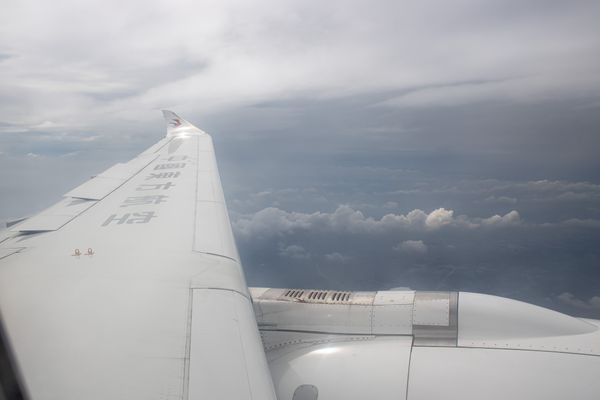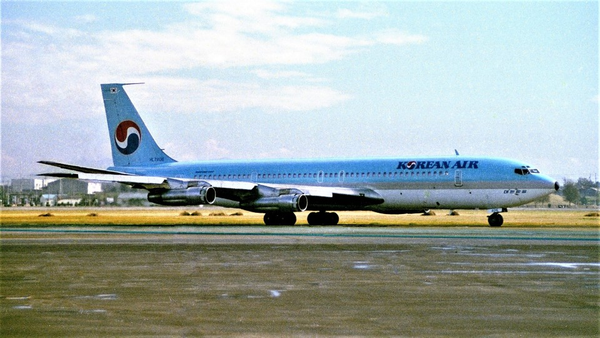In the modern age of aviation, it is common for travelers living in large cities to have more than one option for which airport to fly out of on a given trip. This has not always been the case.
As landing fees and other costs at large airports continue to rise, many airlines have exploited the lower fees at secondary airports and, in some cases, have built up massive footprints.

For example, residents in the Dallas-Fort Worth Metroplex often choose between flying out of the massive Dallas-Fort Worth International Airport (DFW) or the smaller Dallas Love Field Airport (DAL) located closer to downtown Dallas. Similar situations can be found in Houston, Chicago, New York City, Seattle, and Los Angeles, among many others.
In many cases, it might seem logical to fly out of the largest airport in the city. Typically, at those airports, there will be more direct or one-stop flights to your destination of choice. In some cases, high competition on a certain route means low fares. That said, in many cases, it may actually be preferable to fly out of a smaller airport.

Of course, proximity to the airport is overwhelmingly the biggest priority for most travelers. Some metro areas are so large that the largest airport may not even be a consideration for some travelers.
In Los Angeles, for example, LAX airport, located on the coast side in Inglewood, California, is quite far for those living in the Antelope Valley, San Fernando Valley, Orange County, or the Inland Empire. In those cases, Long Beach Airport (LGB), John Wayne Airport (SNA), Hollywood Burbank Airport (BUR), or Ontario International Airport (ONT), may be more convenient from a proximity standpoint, and these airports also have the benefits of having a large network of domestic flight options.

Cost is another major concern for travelers; in this case, smaller airports can often have major advantages. Dallas-based Southwest Airlines first pioneered the model of serving smaller airports in a large city to take advantage of cheaper fees and more terminal space.
In some cases, such as at Chicago's Midway Airport (MDW), Dallas Love Field (DAL), Houston-Hobby Airport (HOU), or Oakland International Airport (OAK), they have built up focus cities with little competition from other airlines, allowing lower prices due to lower fees and larger networks to attract travelers away from larger airports consistently. With Southwest operating such a vast network of point-to-point flights, many smaller airports in large cities have connections to many larger cities in the U.S.

Ultra-low-cost airlines have also popularized even smaller airports, such as Phoenix-Mesa Airport (AZA) or Provo Airport (PVU) just outside Salt Lake City. In these cases, the flight schedule is much less robust than what you might find at Chicago-Midway or Dallas-Love Field, but the prices can often be far lower than what a mainline carrier would charge at Phoenix (PHX) or Salt Lake City (SLC).
These instances are also notable because, at both PHX and SLC, the controlling airline at the hub has very little competition, which means that, in most cases, nonstop flights are only served by one airline, leading to higher fares. Allegiant and other low-cost airlines have exploited this regularly and have seen a huge demand boom.

More generally, alternatives to fortress hub airports present the strongest case for low-cost airlines, assuming the secondary airport is located in a favorable area. Some cities, such as Detroit, Minneapolis, Atlanta, or Charlotte, have yet to see a viable secondary airport enter the fray, but with Paine Field (PAE) in Everett, Washington, recently opening for commercial service for the first time, new secondary airports could feasibly arise in the coming years.
When it comes to what airport is right for you, the answer is truly a function of cost and convenience. Smaller secondary airports will almost always have shorter security lines, easier parking experience, fewer crowds, and more personal space. Still, there are often fewer flight options, or the airport may not be as centrally located.

If you are located in a city fortunate enough to have a decently large secondary airport or live somewhere like New York City, where LaGuardia Airport (LGA) and White Plains Airport (HPN) aren't even in the top two largest airports in the region, flying out of a smaller airport may be especially convenient.
The San Francisco Bay Area also benefits from this, with Oakland Airport (OAK) and San Jose Mineta International Airport (SJC) offering relief from San Francisco International (SFO) and are quite accessible to those living anywhere in the Bay.

Most of the time, the mainline carriers with the strongest frequent flyer programs may not serve the secondary airports en masse like lower-cost airlines. Still, if cost or airport proximity are the most important factors in your travel plans, secondary airports should be increasingly prioritized.
Ryanair to Appeal $302 Million Italian Fine Over Alleged Travel Agency Restrictions » Air France Suspends Paris-Manila Service for Summer 2026 » Air France Flight Drops Nearly 4,000 Feet Per Minute, Diverts to Lyon »
Comments (0)
Add Your Comment
SHARE
TAGS
INFORMATIONAL Airport Dallas-Fort Worth DFW DAL Los Angeles LAX LGB SNA BUR ONT Southwest Airlines Chicago MDW Houston HOU OAK Allegiant Air New York LGA SJC San Francisco SFORECENTLY PUBLISHED
 AeroXplorer Named Official Media Partner for Airliners International 2026 in Denver
AeroXplorer is proud to announce its appointment as the Official Media Partner for Airliners International™ 2026 Denver. This partnership marks a significant collaboration between the world's largest airline collectibles show and one of the fastest-growing digital voices in the aviation industry.
NEWS
READ MORE »
AeroXplorer Named Official Media Partner for Airliners International 2026 in Denver
AeroXplorer is proud to announce its appointment as the Official Media Partner for Airliners International™ 2026 Denver. This partnership marks a significant collaboration between the world's largest airline collectibles show and one of the fastest-growing digital voices in the aviation industry.
NEWS
READ MORE »
 VIDEO: What It's Like Onboard China's COMAC C919
We flew onboard China Eastern's COMAC C919 to experience China's homegrown narrow-body up close. From seat comfort to cabin layout to noise levels to tech: how does it really compare with the Boeing 737 and Airbus A320? This review puts all three workhorses under the same spotlight.
TRIP REPORTS
READ MORE »
VIDEO: What It's Like Onboard China's COMAC C919
We flew onboard China Eastern's COMAC C919 to experience China's homegrown narrow-body up close. From seat comfort to cabin layout to noise levels to tech: how does it really compare with the Boeing 737 and Airbus A320? This review puts all three workhorses under the same spotlight.
TRIP REPORTS
READ MORE »
 KAL858: The North Korean Bombing that Shocked the World
Among the 99 passengers boarding Korean Air Flight 858 on November 29, 1987, few could imagine their journey would end as one of aviation's darkest mysteries.
STORIES
READ MORE »
KAL858: The North Korean Bombing that Shocked the World
Among the 99 passengers boarding Korean Air Flight 858 on November 29, 1987, few could imagine their journey would end as one of aviation's darkest mysteries.
STORIES
READ MORE »



